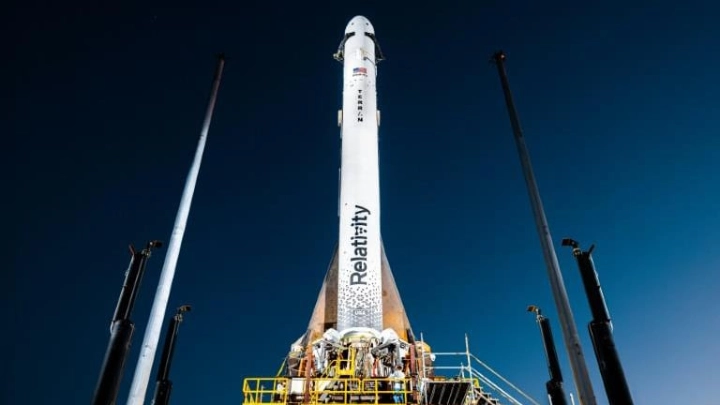Launch of the first 3D-printed rocket ends in failure to enter orbit
TBS || Shining BD
The first 3D-printed rocket ever launched successfully on Wednesday, a victory for the California company that created the cutting-edge spacecraft even though it was unable to enter orbit.
According to a livestream broadcast by aerospace startup Relativity Space, the unmanned Terran 1 rocket, which was billed as being less expensive to produce and fly, launched from Cape Canaveral, Florida at 11:25 pm (03:25 GMT Thursday), but experienced a "anomaly" during second-stage separation as it streamed towards low Earth orbit.
The company withheld additional information right away.
Despite not succeeding in entering orbit, Wednesday's launch demonstrated that the rocket, whose mass is 85% made of 3D-printed components, could withstand the stresses of takeoff.
The third attempt resulted in the launch's success. Due to problems with propellant temperature, the launch was abruptly postponed from its original date of March 8 to March 9.
Due to fuel pressure issues, a second attempt on March 11 was abandoned.
According to Relativity, if Terran 1 had succeeded in reaching low Earth orbit, it would have been the first privately funded methane-fueled spacecraft to do so.
The Terran 1 rocket did not have a payload for its initial launch, but it will eventually be able to launch as much as 2,755 pounds (1,250 kilograms) into low Earth orbit.
The rocket has a 7.5-foot diameter and a height of 110 feet (33.5 meters). (2.2 meters).
The nine Aeon 1 engines used in its first stage and the one Aeon Vacuum engine used in the second were all 3D printed using metal alloys, accounting for 85% of its mass.
According to the Long Beach-based company, it is the biggest 3D-printed object ever and was created using the biggest 3D metal printers in the world.
constructed in 60 days
The aim of Relativity is to create a rocket that is 95% 3D printed.
According to Relativity, the engines on Terran 1 are propelled by liquid oxygen and liquid natural gas, which are the "propellants of the future" and could eventually support a trip to Mars.
The United Launch Alliance's Vulcan rocket and SpaceX's Starship use the same fuel.
The Terran R, a larger rocket being developed by Relativity, can launch a payload weighing up to 44,000 pounds (20,000 kg) into low-Earth orbit.
Next year will see the first launch of a Terran R, which is intended to be completely reusable.
Relativity Space hopes that its 3D-printed rockets will shorten the time that satellite operators must wait to board an Arianespace or SpaceX rocket.
According to Relativity, its 3D-printed versions can be assembled from raw materials in just 60 days and require 100 times fewer parts than conventional rockets.
Tim Ellis, CEO of Relativity and one of the company's co-founders, claims that the company has signed commercial launch contracts worth $1.65 billion, most of which are for the Terran R.
Shining BD























